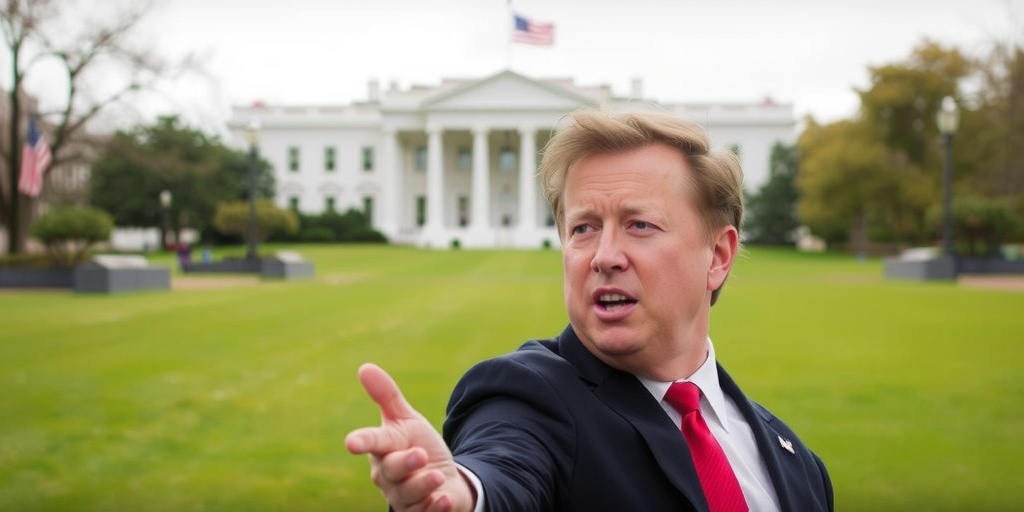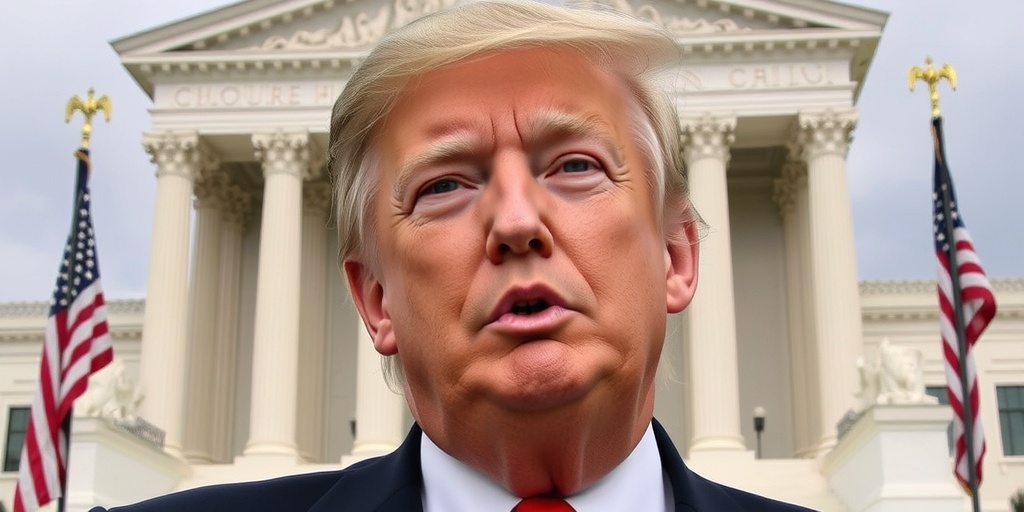Now Reading: Trump’s Shift on Tariffs: From ‘Be Cool!’ to ‘Getting Yippy’
-
01
Trump’s Shift on Tariffs: From ‘Be Cool!’ to ‘Getting Yippy’
Trump’s Shift on Tariffs: From ‘Be Cool!’ to ‘Getting Yippy’

Market Chaos Forces Trump’s Tariff Reversal Amid Economic Turmoil
In a dramatic turn of events, President Trump has recently pivoted from his initially steadfast position on tariffs after a week of financial upheaval sparked by his policies. Despite advocating for calm among his supporters, claiming he knew what he was doing, the rapidly deteriorating market conditions compelled him to rethink his approach.
"BE COOL!" Trump urged his followers in a social media post, asserting that everything would eventually work out well. However, as stock markets faced a plummet partly due to the heavy tariffs he implemented, the reality of the situation began to sink in. Just days after promoting an aggressive tariff policy as a means to bolster the U.S. economy, Trump announced a 90-day pause on these tariffs, a significant policy reversal influenced by financial markets and the rising bond yields.
Conversations among key members of Trump’s administration revealed concerns over a potential financial panic that could spiral out of control. Treasury Secretary Scott Bessent and Vice President JD Vance were among those advocating for a more moderated approach that would focus on China as a primary adversary in trade while also addressing broader market stability. This shift came after Trump’s initial stubbornness regarding tariffs, which had already sent global markets into turmoil.
During a session with reporters explaining the trade policy reversal, Trump suggested that the public was overreacting to the financial situation, claiming that "people were jumping a little bit out of line" due to market jitters. This comment indicated a disconnect between the administration’s perceived futures and the economic realities gripping many investors.
Bessent played a crucial role in persuading Trump to reassess his strategy, as he recognized that continuing on the current path could lead to stunning economic implications, marking it as potentially fatal to markets under Trump’s singular leadership. Confidentially, aides admitted that the influence of the bond market was at the core of Trump’s decision to retreat. Unlike previous economic crashes attributed to different catalysts, this one had the potential to rest entirely on Trump’s shoulders.
The initial tariff announcements had promised to "make America wealthy again", yet, they lacked clarity on methodology and objectives. Internal discussions revealed a significant difference in opinion within Trump’s economic team, with figures like Bessent and Commerce Secretary Howard Lutnick pushing for less aggressive tariffs, only to see Trump’s instincts lead him elsewhere.
Despite the radical proposals, the market’s downward spiral following the tariff enactment forced a room full of seasoned advisors into the uncomfortable position of portraying the abrupt policy changes as part of an overarching master plan. Bessent’s claims that the reversal was by design came off as dubious, especially in light of Trump’s later statements which directly acknowledged market concerns as a driving force behind the pause. The restless market was seen by many as dictating terms to an administration previously regarded as dominant.
Trade representative Jamieson Greer, caught in the tumult, was unaware of the change until he was put on the spot in a congressional hearing about the tariffs, emphasizing the top-down approach that plagued the administration’s communications.
During discussions aboard Air Force One, Bessent emphasized the importance of a concrete negotiation strategy, which left Trump skeptical but gradually receptive to the idea of clarifying intentions ahead of further actions that could gravely affect market conditions.
The official announcement regarding the change in tariffs came after days of mounting investor anxiety, culminating when bonds and stock values saw a sharp reduction. Trump conceded to a 90-day pause on reciprocal tariffs while reiterating an increase on Chinese tariffs to 125 percent, a compromise driven more by urgent market conditions than any pre-designed strategy.
History suggests that Trump’s instinct-driven policies often lead to volatility, and this latest episode, mired in uncertainty, is no exception. Observers noted that while the tariffs were an attempt to restore American dominance in trade, they had unintentionally led to inflationary pressures that directly contradicted Trump’s economic promises.
Although senior officials attempted to frame the 90-day pause as a calculated move to isolate China as America’s main adversary in trade, questions remain about the coherence of the administration’s long-term strategy. Melting stock values had transformed Trump’s previous proclamations of negotiation genius into mere posturing in the face of financial distress.
Ultimately, Trump’s approach to tariffs and trade, heavily influenced by his long-held beliefs over empirical data and economic forecasts, continued to shape his presidency. The path ahead seemed rocky for Trump as he sought to balance longstanding instincts against an increasingly critical and volatile economic landscape.
Stay Informed With the Latest & Most Important News
Previous Post
Next Post
-
 01New technology breakthrough has everyone talking right now
01New technology breakthrough has everyone talking right now -
 02Unbelievable life hack everyone needs to try today
02Unbelievable life hack everyone needs to try today -
 03Fascinating discovery found buried deep beneath the ocean
03Fascinating discovery found buried deep beneath the ocean -
 04Man invents genius device that solves everyday problems
04Man invents genius device that solves everyday problems -
 05Shocking discovery that changes what we know forever
05Shocking discovery that changes what we know forever -
 06Internet goes wild over celebrity’s unexpected fashion choice
06Internet goes wild over celebrity’s unexpected fashion choice -
 07Rare animal sighting stuns scientists and wildlife lovers
07Rare animal sighting stuns scientists and wildlife lovers





















